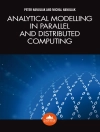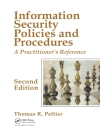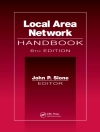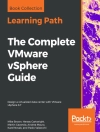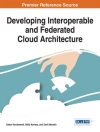This book covers connectivity and edge computing solutions for representative Internet of Things (Io T) use cases, including industrial Io T, rural Io T, Internet of Vehicles (Io V), and mobile virtual reality (VR). Based on their unique characteristics and requirements, customized solutions are designed with targets such as supporting massive connections or seamless mobility and achieving low latency or high energy efficiency. Meanwhile, the book highlights the role of artificial intelligence (AI) in future Io T networks and showcases AI-based connectivity and edge computing solutions.
The solutions presented in this book serve the overall purpose of facilitating an increasingly connected and intelligent world. The potential benefits of the solutions include increased productivity in factories, improved connectivity in rural areas, enhanced safety for vehicles, and enriched entertainment experiences for mobile users. Featuring state-of-the-art research in the Io T field, this book can help answer the question of how to connect billions of diverse devices and enable seamless data collection and processing in future Io T. The content also provides insights regarding the significance of customizing use case-specific solutions as well as approaches of using various AI methods to empower Io T.
This book targets researchers and graduate students working in the areas of electrical engineering, computing engineering, and computer science as a secondary textbook or reference. Professionals in industry who work in the field of Io T will also find this book useful.
Tabela de Conteúdo
Introduction.- 1.1 The Era of Internet of Things.- 1.2 Connectivity in Io T.- 1.3 Edge Computing in Io T.- 1.4 AI in Io T.- 1.5 Scope and Organization of This Book.- References.- 2 Industrial Internet of Things: Smart Factory.- 2.1 Industrial Io T Networks.- 2.2 Connectivity Requirements of Smart Factory.- 2.2.1 Application-Specific Requirements.- 2.2.2 Related Standards.- 2.2.3 Potential Non-Link-Layer Solutions.- 2.2.4 Link-Layer Solutions: Recent Research Efforts.- 2.3 Protocol Design for Smart Factory.- 2.3.1 Networking Scenario.- 2.3.2 Mini-Slot based Carrier Sensing (Ms CS).- 2.3.3 Synchronization Sensing (Sync CS).- 2.3.4 Di_erentiated Assignment Cycles.- 2.3.5 Superimposed Mini-slot Assignment (SMs A).- 2.3.6 Downlink Control.- 2.4 Performance Analysis.- 2.4.1 Delay Performance with No Buaer.- 2.4.2 Delay Performance with Buaer.- 2.4.3 Slot Idle Probability.- 2.4.4 Impact of Sync CS.- 2.4.5 Impact of SMs A.- 2.5 Scheduling and AI-Assisted Protocol Parameter Selection.- 2.5.1 Background.- 2.5.2 The Considered Scheduling Problem.- ix.- x Contents.- 2.5.3 Device Assignment.- 2.5.4 AI-Assisted Protocol Parameter Selection.- 2.6 Numerical Results.- 2.6.1 Mini-Slot Delay with Ms CS, Sync CS, and SMs A.- 2.6.2 Performance of the Device Assignment Algorithms.- 2.6.3 DNN-Assisted Scheduling.- 2.7 Summary.- References.- 3 UAV-Assisted Edge Computing: Rural Io T Applications.- 3.1 Background on UAV-Assisted Edge Computing.- 3.2 Connectivity Requirements of UAV-assisted MEC for Rural.- Io T.- 3.2.1 Network Constraints.- 3.2.2 State-of-the-Art Solutions.- 3.3 Multi-Resource Allocation for UAV-Assisted Edge Computing.- 3.3.1 Network Model.- 3.3.2 Communication Model.- 3.3.3 Computing Model.- 3.3.4 Energy Consumption Model.- 3.3.5 Problem Formulation.- 3.3.6 Optimization Algorithm for UAV-Assisted Edge.- Computing.- 3.3.7 Proactive Trajectory Design based on Spatial.- Distribution Estimation.- 3.4 Numerical Results.- 3.5 Summary.- References.- 4 Collaborative Computing for Internet of Vehicles.- 4.1 Background on Internet of Vehicles.- 4.2 Connectivity Challenges for MEC.- 4.2.1 Server Selection for Computing Offoading.- 4.2.2 Service Migration.- 4.2.3 Cooperative Computing.- 4.3 Computing Task Partition and Scheduling for Edge Computing.- 4.3.1 Collaborative Edge Computing Framework.- 4.3.2 Service Delay.- 4.3.3 Service Failure Penalty.- 4.3.4 Problem Formulation.- 4.3.5 Task Partition and Scheduling.- 4.4 AI-Assisted Collaborative Computing Approach.- 4.5 Performance Evaluation.- 4.5.1 Task Partition and Scheduling Algorithm.- 4.5.2 AI-based Collaborative Computing Approach.- Contents xi.- 4.6 Summary.- References.- 5 Edge-assisted Mobile VR.- 5.1 Background on Mobile Virtual Reality.- 5.2 Caching and Computing Requirements of Mobile VR.- 5.2.1 Mobile VR Video Formats.- 5.2.2 Edge Caching for Mobile VR.- 5.2.3 Edge Computing for Mobile VR.- 5.3 Mobile VR Video Caching and Delivery Model.- 5.3.1 Network Model.- 5.3.2 Content Distribution Model.- 5.3.3 Content Popularity Model.- 5.3.4 Research Objective.- 5.4 Content Caching for Mobile VR.- 5.4.1 Adaptive Field-of-View Video Chunks.- 5.4.2 Content Placement on an Edge Cache.- 5.4.3 Placement Scheme for Video Chunks in a VS.- 5.4.4 Placement Scheme for Video Chunks of Multiple VSs.- 5.4.5 Numerical Results.- 5.5 AI-assisted Mobile VR Video Delivery.- 5.5.1 Content Distribution.- 5.5.2 Intelligent Content Distribution Framework.- 5.5.3 WI-based Delivery Scheduling.- 5.5.4 Reinforcement Learning Assisted Content Distribution.- 5.5.5 Neural Network Structure.- 5.5.6 Numerical Results.- 5.6 Summary.- References.- 6 Conclusions.- 6.1 Summary of the Research.- 6.2 Discussion of Future Directions.- Index.
Sobre o autor
Jie Gao received the M.Sc. and Ph.D. degrees in electrical and computer engineer from the University of Alberta, Edmonton, AB, Canada, in 2009 and 2014, respectively. He joined the Department of Electrical and Computer Engineering, Marquette University, Milwaukee, WI, USA, as an Assistant Professor in August 2020. He was a Research Associate with the University of Waterloo, Waterloo, ON, Canada, from 2019 to 2020 and a Postdoctoral Fellow with Ryerson University, Toronto, ON, Canada, from 2017 to 2019. His research interests include machine learning for communications and networking, Internet of Things (Io T) and industrial Io T solutions, and next-generation wireless networks in general. Dr. Gao is a Senior Member of the IEEE, an Editor for IEEE Access and Springer Peer-to-Peer Networking and Applications, a Co-Chair for IEEE VTC 2021 Fall Workshop on Autonomous Vehicular Networking, and a TPC member for IEEE ICC (2018-2022), IEEE WCNC (2019-2022), and IEEE VTC (2020, 2021).
Mushu Li received the B.Eng. degree from the University of Ontario Institute of Technology (UOIT), Canada, in 2015, the M.Sc. degree from Ryerson University, Canada, in 2017, and the Ph.D. degree in Electrical and Computer Engineering from the University of Waterloo, Canada, in 2021. She is currently a research associate at the Department of Electrical and Computer Engineering at the University of Waterloo. Her research interests include mobile edge computing, system optimization in wireless networks, and machine learning-assisted network management. She was the recipient of NSERC Canada Graduate Scholarships (CGS) in 2018, and Ontario Graduate Scholarship (OGS) in 2015 and 2016, respectively.
Weihua Zhuang received the Ph.D. degree in electrical engineering in 1993 from the University of New Brunswick, Canada. She has been with the Department of Electrical and Computer Engineering, University of Waterloo, Waterloo, ON, Canada, since 1993, where she is a University Professor and a Tier I Canada Research Chair in Wireless Communication Networks. Dr. Zhuang was a recipient of the 2021 Women’s Distinguished Career Award from the IEEE Vehicular Technology Society, 2021 R.A. Fessenden Award from the IEEE Canada, 2017 Technical Recognition Award in Ad Hoc and Sensor Networks from the IEEE Communications Society, and a co-recipient of several Best Paper Awards from IEEE conferences. She was the Editor-in-Chief of the IEEE Transactions on Vehicular Technology from 2007 to 2013, Technical Program Chair/Co-Chair of IEEE VTC 2017/2016 Fall, and Technical Program Symposia Chair of IEEE Globecom 2011. She is an elected member of the Board of Governors and Vice President for Publications of the IEEE Vehicular Technology Society. She was an IEEE Communications Society Distinguished Lecturer from 2008 to 2011. Dr. Zhuang is a Fellow of the IEEE, Royal Society of Canada, Canadian Academy of Engineering, and Engineering Institute of Canada.



